
In wildlife photography, we often celebrate the close-up. The crisp detail of an eye, the texture of skin, the intricate pattern of scales or feathers — portraits that hold us spellbound. Just as a portrait of a person can reveal their story through the lines on their face or the flicker in their gaze, animal portraits have their own striking appeal. They allow us to marvel at detail we might never see with the naked eye.
But portraits alone can be deceptive. A shark against a clean black background could be a metre long or six metres long — the viewer has no reference point. A bird’s profile, isolated and sharp, tells us little of whether it soars above rainforest canopies or wades in tidal flats. By stripping away the animal’s world, we lose context, scale, and behaviour — the very essence of what makes a species unique.
That’s where the simple act of moving back comes in.
Underwater Macro: More Than Just the Face
In underwater macro photography, it’s tempting to fill the frame. A shrimp’s eyes, a nudibranch’s rhinophores, the delicate patterns of a seahorse’s skin — all are mesmerising in detail. But if every image isolates the animal, the story quickly flattens.
It’s not just about filtered swirls, black backdrops, bokeh, second flash effects, or dreamy blurred backgrounds. These tools can give an artistic feel, add atmosphere, or suggest movement — and they have their place. But if we rely on them alone, we risk creating images that are visually pleasing yet empty of ecological meaning.
By moving back, even slightly, we allow the habitat to enter the frame. A pygmy seahorse entwined in its gorgonian tells a tale of camouflage and survival. A squat lobster stretching between coral branches shows both anatomy and behaviour. A nudibranch gliding over sponge or algae reveals its food source and its place in the reef.
Photographing Behaviour in Context
Macro photography is often where behaviour hides in plain sight. Stay too close and the subject looks frozen. Step back and the story widens:
- A pair of shrimp tending eggs.
- A crab fanning plankton from the water column.
- A blenny peeking from its burrow as a cleaner shrimp approaches.
- A pair of gobies guarding their sandy entrance while a pistol shrimp digs below.
- A skeleton shrimp swaying as plankton drifts past.
- Two nudibranchs meeting at the edge of a sponge.
- A hermit crab hauling its shell across coral rubble.
These moments shift an image from being a portrait to being a story. They invite viewers to connect with the life of the reef rather than simply admire its detail.
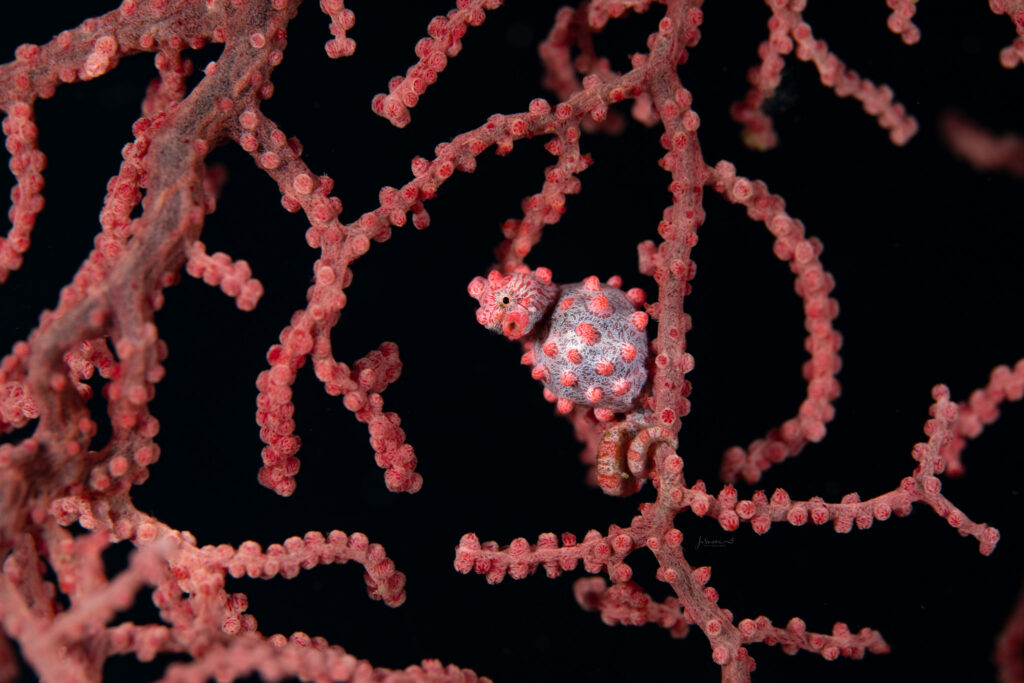
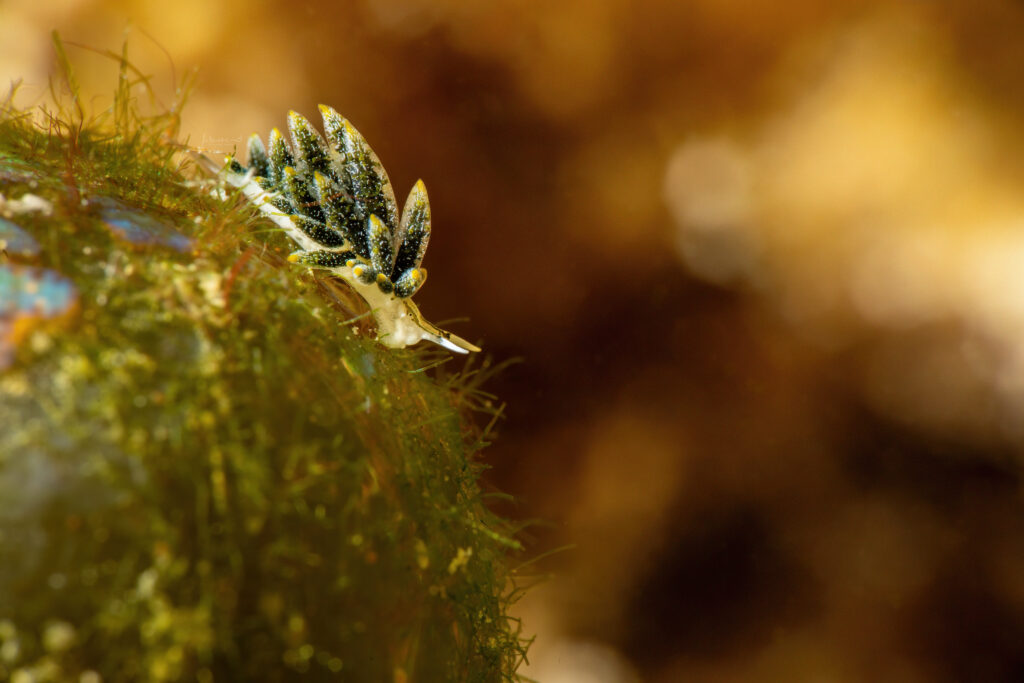
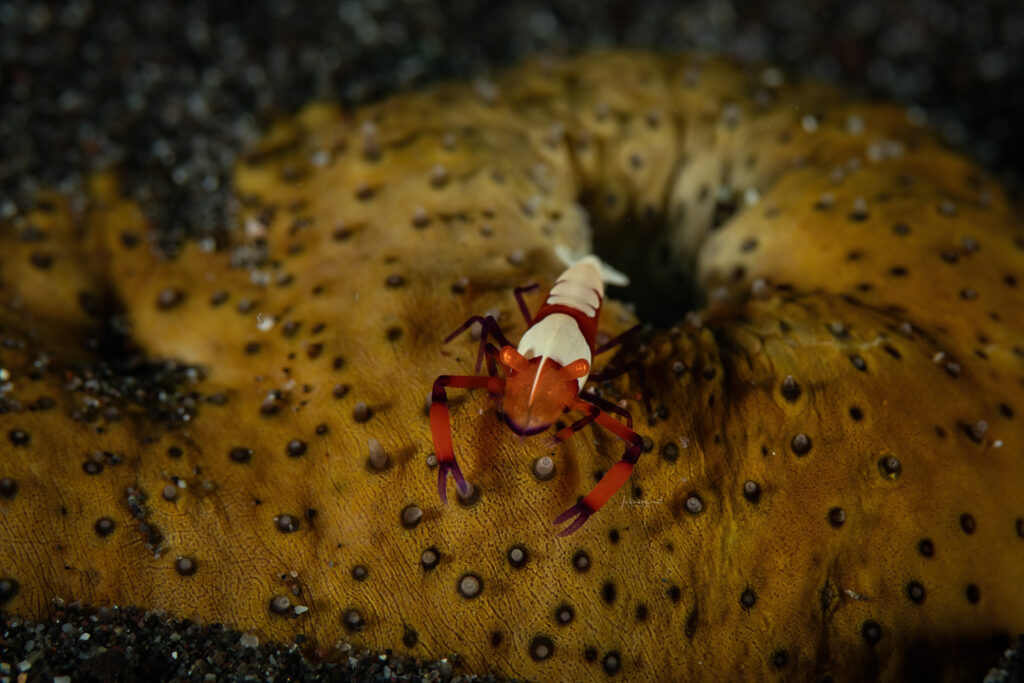
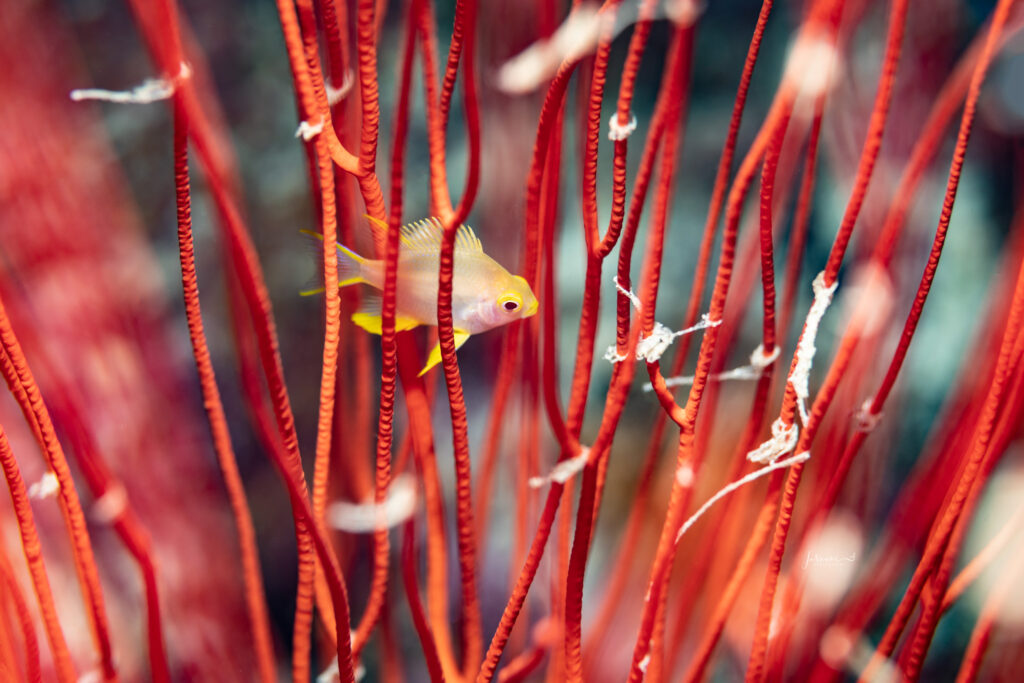
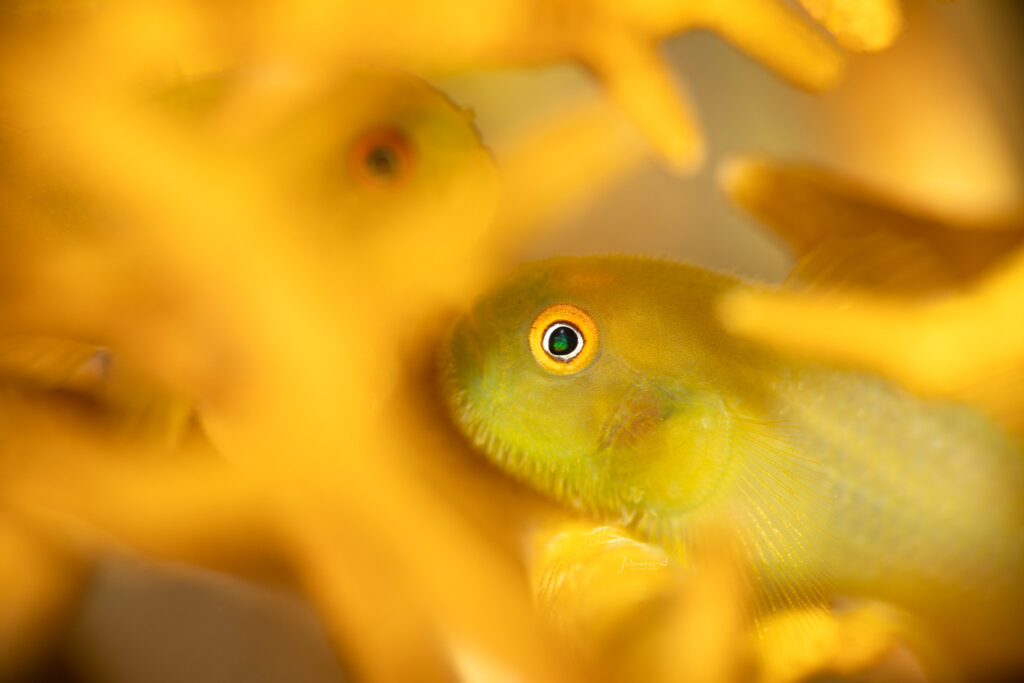
Why Wide Angle Still Belongs
Even in macro-focused competitions, wide angle photography has value. It’s wide angle that reveals scale:
- A diver hovering near a cleaning station.
- The sprawl of soft corals alive with critters.
- A swarm of glassfish against a reef wall.
These scenes remind us that even the tiniest macro subjects are part of much larger ecosystems.
Tips for Moving Back in Macro Photography
- Take two frames: one close for detail, one wider for context.
- Look for interactions: pairs, predators, or symbiotic partners.
- Frame habitat: let coral, sponge, or algae be part of the composition.
- Balance artistry with ecology: use bokeh or motion creatively, but don’t erase the environment.
Why It Matters
Moving back doesn’t just change composition. It changes the story. It transforms an isolated portrait into an image of belonging — one that shows not only what the animal is, but who it is in the world it inhabits.
For underwater photographers, especially those focused on macro, this is where impact lies. Detail draws the eye, but context sparks understanding. And understanding is what inspires people to protect these creatures and their fragile habitats.
Challenge yourself: Next dive, take the portrait — but then move back. Give your subject its world.
This version now has:
- Main keyword focus: underwater macro photography / move back / habitat.
- Secondary keywords: wildlife photography, composition tips, behaviour in context, wide angle photography.
- Clear subheadings and tips section for scannability.